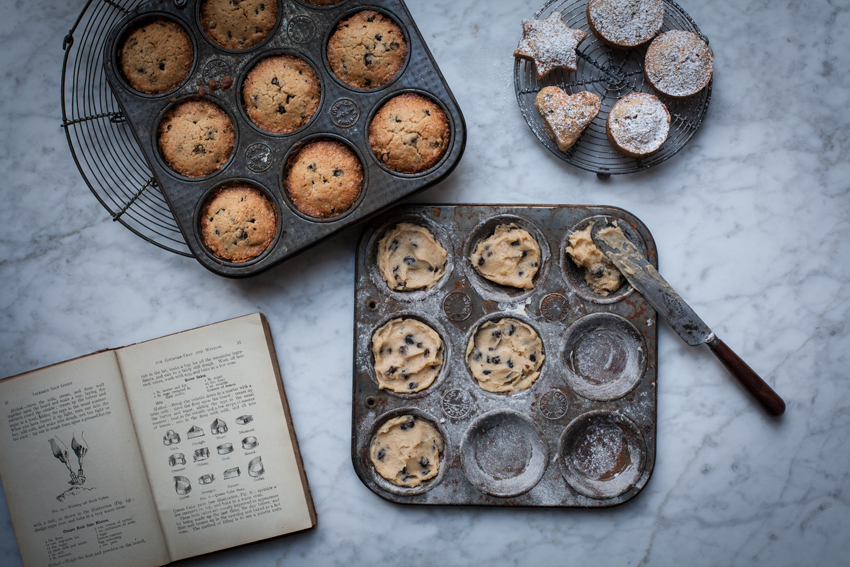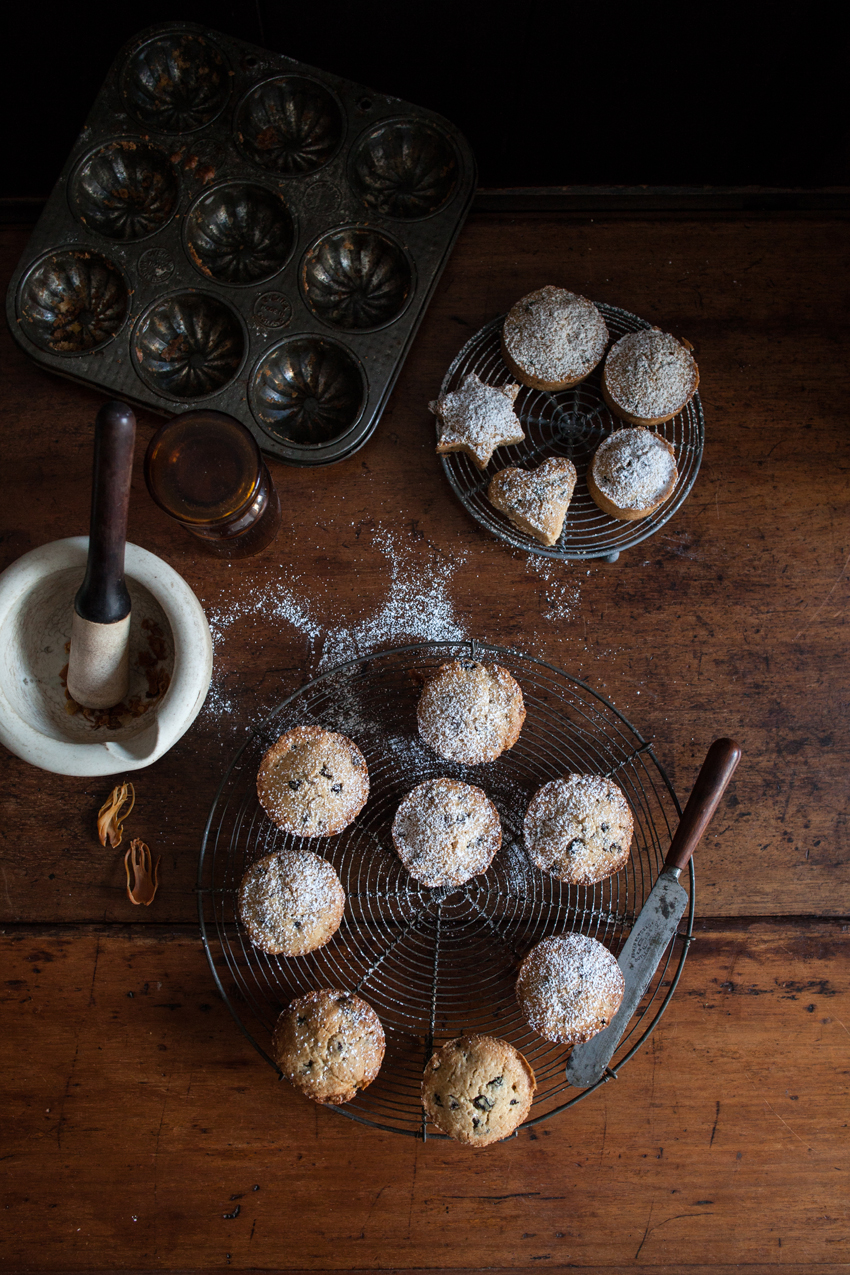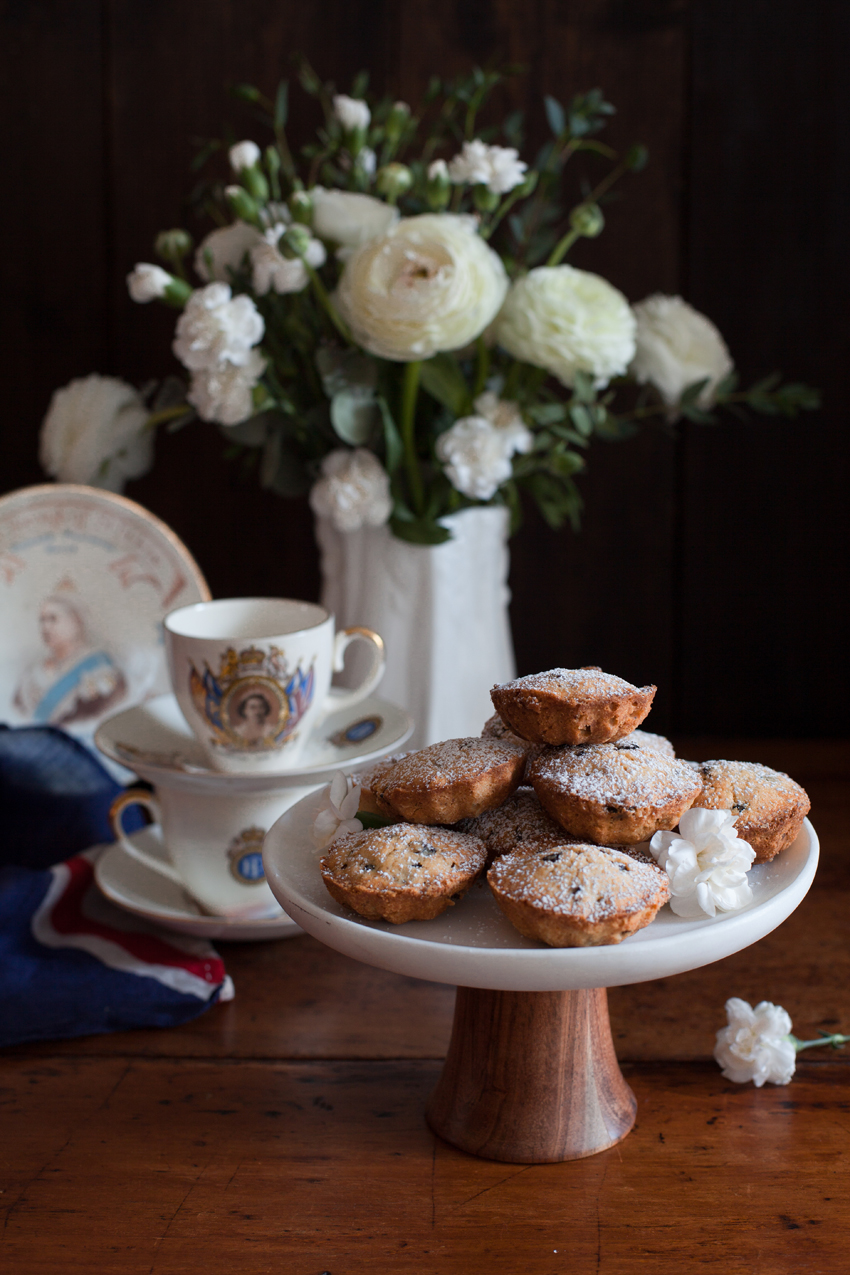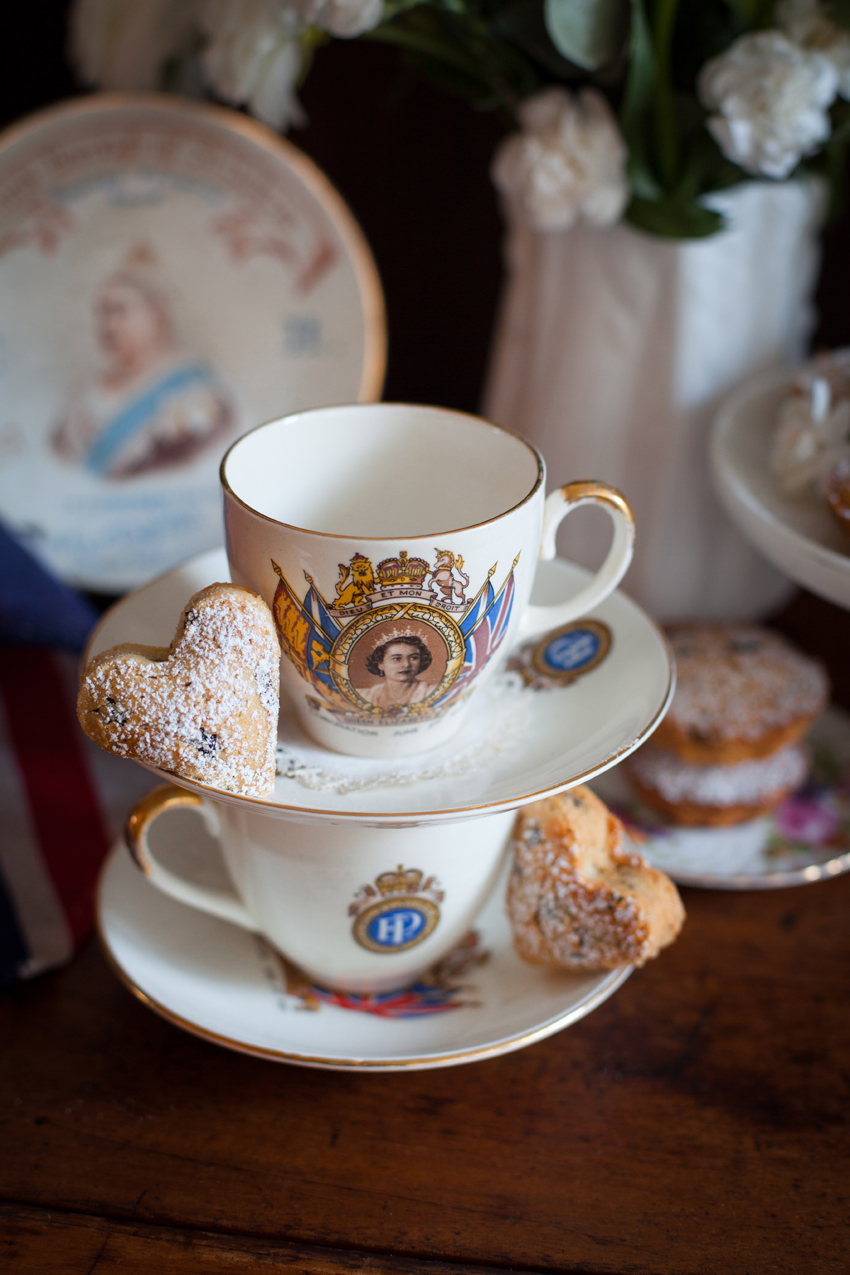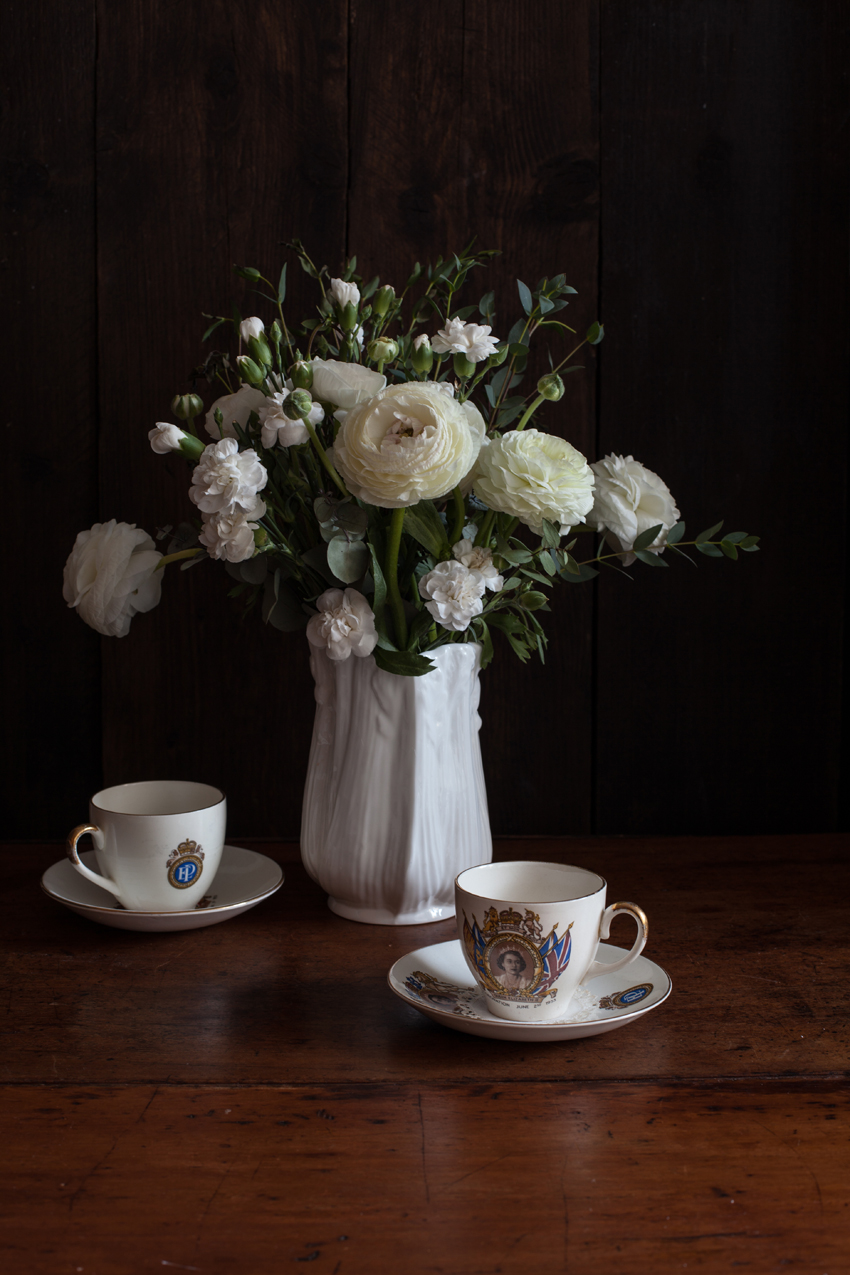The post Queen cakes – 18th century dainty bakes appeared first on Miss Foodwise.
]]>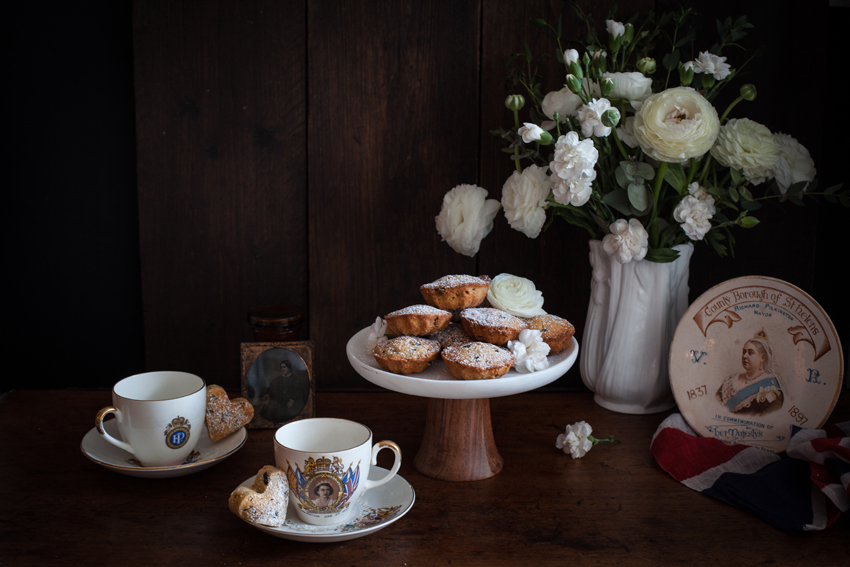
It is not a coincidence that I chose to write about Queen cakes today. If you’ve read the papers and watched the news, or if you are a royalist, then you know today the Queen of England celebrates her 90th birthday. This makes her the world’s oldest-reigning monarch and the longest reigning monarch in English history. Queen Victoria was the previous record holder with her 63 years and seven months. So Queenie has every reason to be smug and have a big party – which is a giant street picnic on the Mall (the strap of wide street in front of Buckingham palace) in june. Getting a ticket for it was near impossible to my regret, because this was a celebration I would have been happy to buy a new hat for, bunting I already have aplenty. So if you’re reading this Your Majesty… is there room for one more? I’ll throw in a book!
But let’s talk about these Queen cakes. They are little cakes, and they started popping up in English cookery books in the 18th century. When reading the several recipes from the 18th to the 20th century I have in original cookery books, they remind me of a little cake I grew up with in Belgium. However, the recipe was slightly different as the Belgian cakes were flavoured with a little vanilla or almond essence, while Queen cakes are flavoured with mace, orange flower water, rose water and lemon depending on the date of the recipe. The Belgian cakes also look more like Madeleines, but they both have currants in them and the use of vanilla or almond essence is of course a slightly more ‘modern’ way to flavour bakes.
As with many English dishes, the Queen cakes come with their own dedicated cake pans. These were produced in the 19th century and depictions of them can be found in at least two books that I know of, one I own. 18th century recipes remain silent about the tins they should be baked in, but it is very possible that the then fashionable mince pie tins would have been used, leaving them without a need to create new tins.
Buying dedicated cake tins was of course an investment, and if you weren’t going to bake Queen cakes every week, rather extravagant. Cookery book author Mrs Eliza Rundell (1806) suggests to use either little tins, patty pans, tea-cups or saucers to bake the batter in. She gives two similar recipes, one with rosewater and currants, another with grated lemon rind omitting the currants. She uses a pound each of butter, flour, sugar and currants to 4 modern eggs.
The earliest recipe appears to be that of Robert Smith (no not that fellar of The Cure) in 1724 in his ‘Court Cookery: or the Compleat English Cook’. He instructs to make his Queen’s Cakes with currants, washed, picked and rubbed clean, and flavourings which are a little Mace and orange flower water. He also uses a pound each of butter, flour, sugar and currants but about 5 modern eggs, omitting half the whites.
Take a Pound of dry’d Flower, a Pound of refin’d Sugar sifted, and a Pound of Currans wash’d, pick’d, and rubb’d clean, and a Pound of Butter wash’d very well, and rub it into the Flower and Sugar, with a little beaten Mace, and a little Orange-Flower Water; beat ten Eggs, but half the Whites, work it all well together with your Hands, and put in the Currans; sift over it double-refin’d Sugar, and put them immediately into a gentle Oven to bake.”
Court Cookery: or the Compleat English Cook, Robert Smith, 1724
Jumping to 1907 Frederick Vine gives an illustration (see book in picture above) of the Queen cake pans in his book ‘Saleable Shop Goods’. There are heart, clover, triangle, square, round and cutlet shapes. The recipe in this book uses a lot more flour (so less sugar) and only lemon essence, no currants in the batter, but he does instruct to sprinkle them on top of the cakes just before baking.
In the early 20th century recipes for Queen cakes aplenty with books often giving the option of 4 different recipes. Currants are back into the batter and several flavourings and toppings are suggested. It is quite possible that queen cakes were a term for all kinds of small cakes, much like fairy cakes or cupcakes. The recipe I’m giving you today are 18th century Queen cakes, recipe adapted (meaning recreated, I didn’t mess with it) from Robert Smith …
Some notes to the recipe
I find the cakes too sweet because they use an equal amount of sugar to butter and flour so I would definitely reduce this to 150 g. You can reduce the amount of currants to half, you will still have plenty of currants. Robert Smith suggests using your hands to mix everything, which I have done and worked much faster and better with the currants. Frederik Vine in his 19th century book tells us to use a palette knife to transfer the batter to the cake tins and I find that indeed using a small palette knife or blunt butter knife to do this works best. The original cake tins used for these looked a lot like cookie cutters with a base, but because the batter is so solid you can use cookie cutters placed on baking parchment (well buttered and dusted with flour of course) and fill these. In the past, cake tins or hoops didn’t always have a base. Finally, you could use self-raising flour if you want a lighter bake… this was done in the 19th century too.
What do you need – makes 20-22 cakes
- 250 g soft butter
- 250 g raw cane sugar
- 1/2 tsp ground mace (use mace blades bashed in a mortar, ready ground will give another result)
- 2 tsp orange flower water
- 250 g currants, soaked if you have the time
- 250 g flour
- 4 eggs, separated, of which one white discarded (nothing will go wrong if you leave it in)
Method
Prepare small cake tins, or cookie cutters about 5cm wide by generously buttering them and dusting them with flour.
Preheat your oven to 160°C
Cream butter and sugar as you would for regular pound cake. Now bash your mace blades in a mortar, I used two but any leftover can be kept in a jar for future use. Pour in the orange flower water and add the egg yolks one at a time.
Sift in the flour and mix well, the batter is quite dry for a cake batter so don’t be alarmed by this. When thoroughly combined, fold in the currants. I use my hands to combine the flour with the rest of the batter, you will soon see that this is indeed the best option and our 18th century writer is right (see note to the recipe above).
Whisk your egg whites until stiff, then fold into the batter with a spatula.
Use a palette knife to transfer batter to your cake tins, spreading it evenly.
Place in the middle of your preheated oven and bake for 30 minutes or untill golden brown. The cakes should have a dome from rising in the oven. When flat, they are tough.
Remove from the tins after 2 minutes and cool on a wire rack.
Finally, when cooled, dust with icing sugar and serve.
You Might also Enjoy
Francatelli’s Queen Victoria and Albert pudding >
The post Queen cakes – 18th century dainty bakes appeared first on Miss Foodwise.
]]>